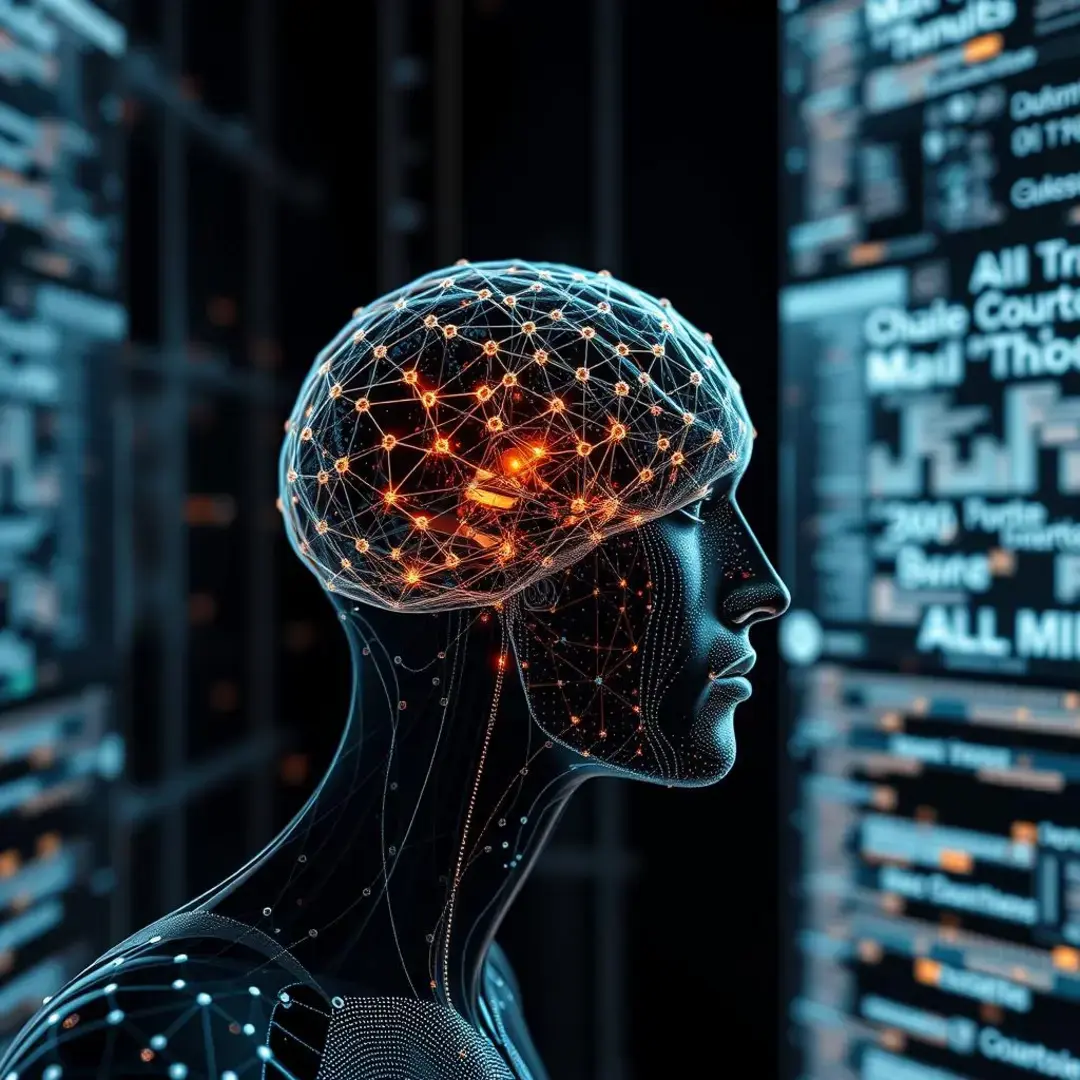GPT4 meaning: What is GPT 4, what are the capabilities?
Understanding the GPT-4 architecture

Transformer models revisited
The evolution of artificial intelligence has led us to the development of sophisticated models like GPT-4. At its core, GPT-4 is based on the transformer architecture, which revolutionized natural language processing. This model utilizes a method of deep learning that allows it to better understand and generate human-like text through layers of attention mechanisms.
Attention mechanisms are fundamental to GPT-4, enabling the model to focus on different words in a sentence to better understand context. This adaptive focus allows GPT-4 to capture more nuanced meanings in language, making it significantly more effective than its predecessors. As we explore the capabilities of GPT-4, we see how these mechanisms have been refined to enhance performance across various applications.
One of the standout features of transformer models, including GPT-4, is the concept of multi-head attention. This technique allows the model to process multiple aspects of the input data simultaneously, leading to improved context understanding. By distributing attention over different parts of the input, GPT-4 can maintain coherence in long conversations and produce more relevant outputs.
Key architectural improvements over GPT-3
When comparing GPT-4 to its predecessor, GPT-3, several architectural improvements stand out. A noteworthy enhancement is the implementation of sparsity in neural networks, allowing GPT-4 to process information more efficiently. By focusing computational resources on the most relevant connections, the model achieves significant gains in performance while using less energy and memory.
Another key advancement is the expanded memory and context window of GPT-4. With the ability to remember and retain information over longer conversations, the model can generate responses that are contextually rich and appropriately detailed. This extended memory facilitates more engaging and human-like interactions, essential for applications ranging from chatbots to content generation.
Exploring the capabilities of GPT-4

Advanced language generation
One of GPT-4’s primary strengths is its advanced language generation capabilities. The model produces text that is not only coherent but also demonstrates a high level of fluency. This improvement stems from the refined training techniques and a more extensive dataset, enabling GPT-4 to develop a better grasp of grammar, style, and tone.
Another impressive advantage of GPT-4 is its ability to be fine-tuned for specific tasks and domains. Developers can tailor the model to meet the unique requirements of industries ranging from healthcare to finance, thereby enhancing its utility across various sectors. This adaptability makes GPT-4 a valuable tool for businesses seeking to automate content creation or customer service interactions.
GPT-4 has also shown remarkable proficiency in handling complex prompts and instructions. This capability allows users to engage with the model in a more natural and intuitive way, posing challenges or detailed queries with confidence that the model can understand and respond accurately. As a result, users can leverage GPT-4 for a variety of intricate applications that require an intelligent understanding of context.
Multimodal capabilities (image and text understanding)
One of the groundbreaking features of GPT-4 is its multimodal capabilities, enabling it to process and interpret both visual information and text. This significant leap opens up a broader range of applications, allowing for an integrated approach to understanding data from different sources. For instance, GPT-4 can analyze an image and provide insightful commentary or analysis related to that visual content.
GPT-4 can also generate descriptive text from images, a feature that has practical implications in various fields. This capability not only aids in accessibility but also enhances the user experience in applications such as eCommerce, where product images paired with detailed descriptions can drive conversions. With AI’s ability to bridge text and visuals, engaging and informative content can be created efficiently.
The potential applications for GPT-4’s multimodal capabilities are vast and varied. From image captioning to visual question answering, the model can significantly impact areas like education, entertainment, and social media. By providing accurate textual responses based on visual inputs, GPT-4 can make interactions richer and more informative, catering to the demands of a visually-driven digital world.
Reasoning and problem-solving
GPT-4’s advancements in reasoning and problem-solving are noteworthy as well. The model demonstrates a greater ability to perform logical deductions and make inferences based on the data presented. This improvement allows it to tackle complex problems across various disciplines, from science and engineering to literary analysis.
In addition, GPT-4 has shown promise in understanding and solving complex mathematical and scientific concepts. By leveraging its extensive training and advanced reasoning capabilities, GPT-4 is equipped to assist users in comprehending challenging topics. This potential fosters innovation in research and education, presenting new opportunities for collaboration between human intelligence and AI.
Despite the advancements, GPT-4 still faces limitations in reasoning tasks. The reliance on patterns in data means that it can sometimes falter in tasks requiring deep, abstract thinking or when presented with ambiguous instructions. Recognizing these challenges is crucial for developers and users, as it informs them about the boundaries of current AI capabilities and paves the way for future enhancements.
Advanced applications and implications of GPT-4

Impact on various industries
The ripple effects of GPT-4’s capabilities are being felt across numerous industries, notably in content creation and marketing. Companies can utilize the model to generate high-quality written material, from blog posts to advertising copy, thereby streamlining their content strategies. This efficient approach not only saves time but also enhances creativity by enabling marketers to develop diverse content ideas.
In customer service, GPT-4 is poised to transform how businesses interact with their clients. By employing intelligent chatbots powered by GPT-4, companies can provide instant, relevant responses to customer inquiries. This elevation in service quality can lead to higher satisfaction rates and a more personalized customer experience, positioning businesses for success in today’s competitive marketplace.
Moreover, GPT-4’s capacity for logical reasoning and data processing can accelerate research and development efforts across various fields. From drug discovery in pharmaceuticals to advancements in artificial intelligence, researchers can harness the model’s capabilities to analyze complex datasets and generate insights efficiently. This potential fosters a collaborative environment where humans and AI work together to push the boundaries of knowledge and innovation.
Ethical considerations and potential risks
As powerful as GPT-4 is, it also raises ethical considerations regarding bias and fairness in language models. The data used to train these AIs can inadvertently contain biases, which may result in skewed outputs or reinforce harmful stereotypes. Addressing these issues is paramount to ensuring that AI technologies serve everyone equitably and responsibly.
Moreover, the capability of GPT-4 to generate human-like text poses a significant risk concerning misinformation and the spread of fake news. As the internet becomes increasingly inundated with content, distinguishing between fact and fiction may become more challenging. Developers must prioritize safeguards to mitigate these risks and promote the responsible use of AI-generated content.
Lastly, with the advent of powerful models like GPT-4, discussions about the future of work and automation have intensified. While AI can lead to increased efficiency and productivity, there are concerns about job displacement and the changing landscape of employment. Striking a balance between leveraging AI’s benefits while preserving the workforce will be a critical challenge for society moving forward.
Pushing the boundaries of AI with GPT-4

Current limitations and future research directions
While GPT-4 holds immense potential, it still grapples with limitations, particularly in explainability and interpretability. As users engage with AI, understanding the rationale behind decisions or outputs is essential for building trust. Future research must focus on elucidating how models like GPT-4 arrive at conclusions, making AI a more transparent tool for users.
Additionally, enhancing the robustness and reliability of GPT-4 is a pivotal area for future research. Ensuring that the model can handle a variety of inputs without producing erroneous or biased outputs is critical for its adoption in real-world applications. Continued advancements in this domain will further solidify GPT-4’s position as a trustworthy AI solution.
The potential of GPT-4 and beyond
Looking ahead, GPT-4 represents a significant step toward the ambitious goal of achieving artificial general intelligence (AGI). While current models excel in specific tasks, the quest for AGI aims to create systems that can exhibit a comprehensive understanding across various fields akin to human intelligence. GPT-4’s advancements lay the groundwork for this exploration, pushing the boundaries of what is possible in AI.
Ultimately, GPT-4 will play a critical role in shaping the future of AI and its integration into our daily lives. As businesses, researchers, and individuals continue to leverage its capabilities, the model’s evolution will give rise to new applications and innovations. Being part of this transformative journey invites us to consider the opportunities and challenges that lie ahead in the world of artificial intelligence.












